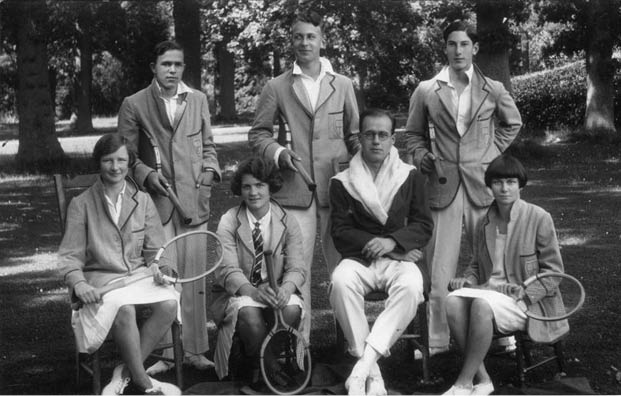Tennis has a much debated and very colourful history that stretches back to before the 11th century. Did you know that in 1316 Louis X was reported as having died as a result of excessive tennis play? Read on to find out more about how tennis has evolved to become the much revered sport it is today.
A quick history of tennis: the European version
Early pictorial and written evidence has been interpreted to suggest that the beginnings of tennis may have been ‘served up’ as far back as the early Middle Ages. According to academic Heiner Gillmeister [1], tennis evolved as a handball variation of medieval football played in the cloisters or courtyards of monasteries. Illustrations indicate that the game was played by two teams of three of more players per side, using the palm of their hands to return volleys or rebounds.
Embracing the challenge and frivolities of the game, the young freshly educated noblemen took the fun back to their castles, building replica courts of their own.
Through the 16th and 17th centuries, commercial tennis venues run by universities and entrepreneurs were entertaining the bourgeoisie masses, with the palm of the hand giving way to protective leather gloves, and evolving to tennis rackets.
Tennis as we now know it has been reinterpreted as a progressive variant of the Renaissance sport and continues to be played around the globe today.
The court
By design, the cloisters of monasteries naturally lent themselves to dividing lines, walls, sloping roof, openings and hard court surfaces such as stone or wood. As the popularity of the game grew commercial courts were built undercover from the 17th century.
A lawn tennis trend emerged in the 1870s transforming the court. According to the International Tennis Federation’s History of Tennis Courts, Major Walter Wingfield patented his version of grass tennis in 1873. The shape of the court was in an hourglass design tapering at the net, and has since evolved to the longer, rectangular shape it is today. By the late 19th century lawn tennis became the preferred sport over croquet, with croquet courts being offered up to host lawn tennis tournaments.
Hard acrylic courts of today emerged alongside engineering technology in the 1940s. Today, tennis is played on a grass courts, hard courts, carpeted courts, and clay courts.
Tennis balls
It is believed that the first tennis balls used in the courts of the monasteries were wooden. As the game morphed over time, so did the ball structure. From wood; to a leather-bound, celluloid filled orb; to cork or solid rubber and then to the gas filled vulcanised rubber balls we are familiar with today.
It was the introduction of lawn tennis and technology developments in vulcanised rubber that saw the end of solid balls give way to gas filled rubber balls that bounced – much more effective on a turf!
The fluorescent yellow of tennis balls today, was driven by appeasing television audiences back in 1972.
And, if you’re curious about the fluff on a tennis ball, this article will shed some light for you –Behind the Fuzz.
Tennis scoring: why 15?
It is believed that the traditional scoring method by 15s may have been based on a French coin, the gros denier, worth 15 pence and the number 60 being a boundary in the French numerical system 1.
Written evidence of the scoring method was found in an English political poem The Battle of Agincourt in the early 15th century.
Rackets
Who needs rackets when you have a perfectly capable palm of your hand to return a wooden, cork or leather bound ball with? It is understood that European monks used the palm of their hands as they ran amongst the monastery’s cloisters to return volleys, or ‘land a chase’.
France embraced this monastery game, gathering in great crowds to watch Jeu de Paume or ‘Game of the Palms’.
As the game gained popularity, leather webbed gloves were adapted to protect bourgeois hands eventually transforming further into bats or paddles.
The elliptical shaped rackets we know today emerged sometime between the 14th and 16th centuries in the form of a wooden tear drop shaped frame with strings made of gut.
Over time, not much changed apart from the size of the head of the racket which grew along with the popularity of lawn tennis. Following the industrial revolution, tennis saw the introduction of metal framed rackets but they were not as popular as their lighter, wooden framed peers. It wasn’t until another century later, in 1967 when Wilson Sporting Goods marketed a metal and nylon strung racket that was lighter than wooden framed rackets, that metal framed rackets became popular.
Today, rackets are light in weight, with a wood, steel or graphite elliptical frame, with a network of cord, nylon or catgut strings.
With over 700,000 people attending Melbourne’s Australian Open last year and more than 40 nations represented, the great legacy passed on by monks continues to be enjoyed around the world.
References
1 Heiner Gillmeister, University of Bonn, Germany, ITF Coaching and Sport Science Review 2008; 15 (46): 16 – 18




